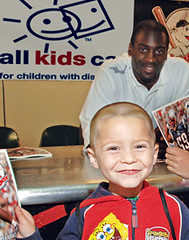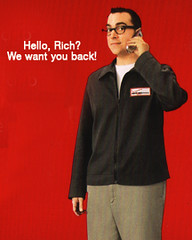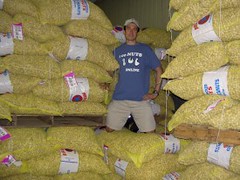
On most flights, Virgin America has it all. Its mission is to make flying good again — with brand new planes, attractive fares, top notch service, and innovative amenities. It's the kind of reinvention that has passengers clamoring to board the plane even if it means waiting 15 minutes or an hour on the tarmac.
Or is it?
While anyone flying out of San Francisco International Airport (SFO) might know that fog or rain frequently set departure times back as it did yesterday, no one anticipated that Virgin America would forget to notify passengers that their flights would be delayed. The first notification came 25 minutes after the scheduled departure time.
Sure, most passengers had a hunch that the flight was delayed, given it had never been assigned a gate. Some learned about it while hovering around the departure screens scattered throughout the terminal, partaking in a surreal event as their scheduled "on time" departure came and went without so much as a gate notification, actual departure time, or service agent update. A few checked the Website on smart phones and laptops. A handful turned to passenger service agents boarding other flights.
"We don't know. Watch the terminal monitors."
It was the most common answer before busy passenger service agents would take off for parts unknown. Less common was asking delayed passengers to empathize with other passengers who were also delayed. Those passengers had to wait an hour, one agent said, pointing to the group he was about to allow to board.
Unfortunately, any empathy for others eventually eroded as it took a full 2 1/2 hours before Virgin America would have any direct communication with passengers again. All the while, British Airlines and JetBlue updated their customers, offering apologies for the briefest of delays, which only seemed to add insult to injury for those left in the dark by Virgin America.
Even after Virgin America finally assigned the flight a gate, it took another half hour before the team provided updates with any sense of clarity. Shortly after, they attempted to infuse fun into the situation by offering free drink vouchers to the passenger who could produce the oldest penny or guess the singer of a song playing over the gate intercom.
While the games did temporarily take the edge off a bad situation, one wonders if Virgin America took too long to find its groove. Are leather seats, in-flight video entertainment, and mood lighting enough to keep passengers coming back for more?
It mostly depends on the unique perspective of each individual passenger and whether previous experiences make the mix-up an exception or the rule. Otherwise, it seems Virgin America learned a valuable lesson. If you don't deliver on your core service, no amount of reinvented amenities, services, or selective apologies can make up for it.
There are, after all, only two core services for every airline. Deliver passengers and their luggage to the destination on time, and communicate with them when you don't. Added values — ranging from comfort to humorous onboard educational videos — only count when the first two services are met.
In this case, Virgin America didn't break guitars. It only broke an opportunity to turn more passengers into advocates or evangelists.






























